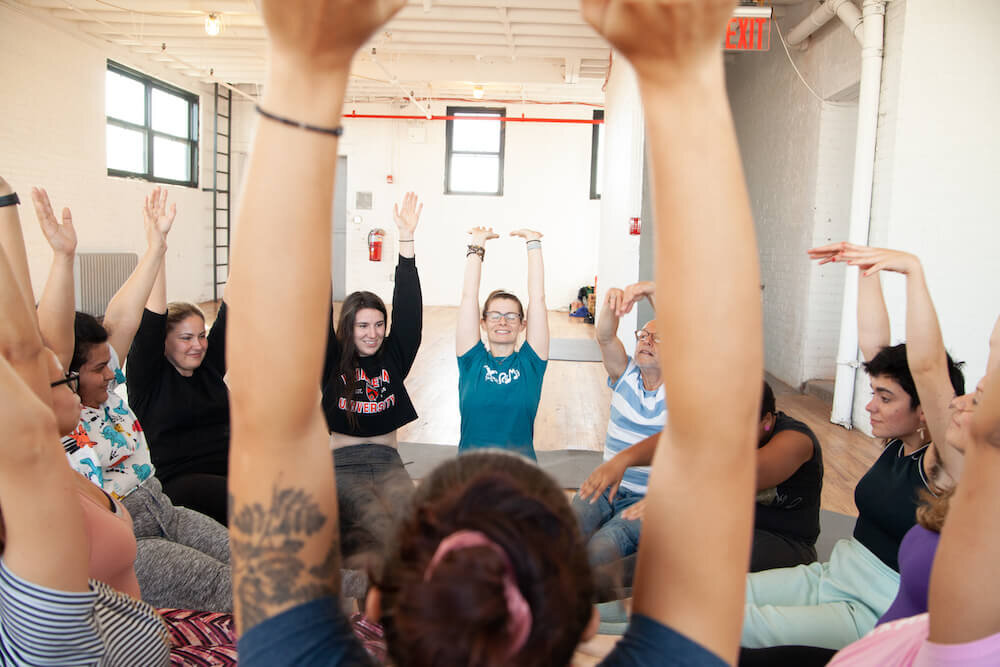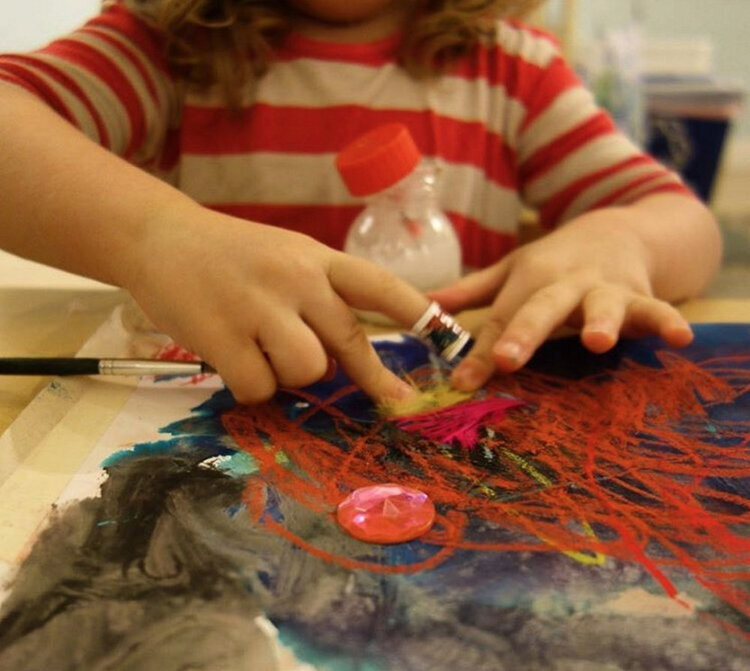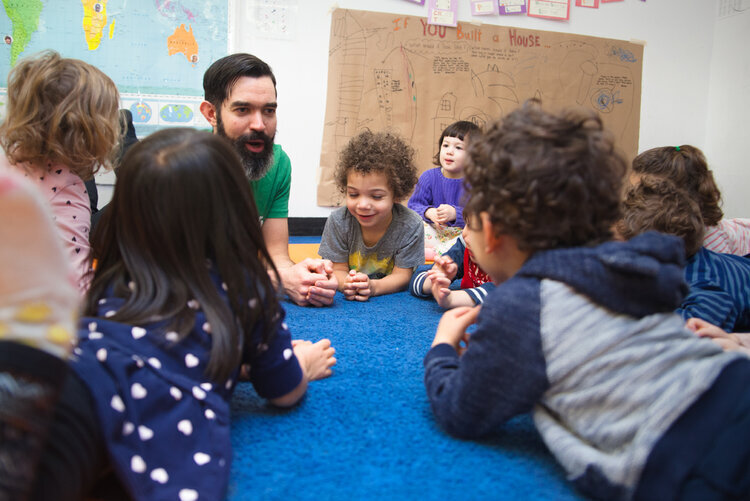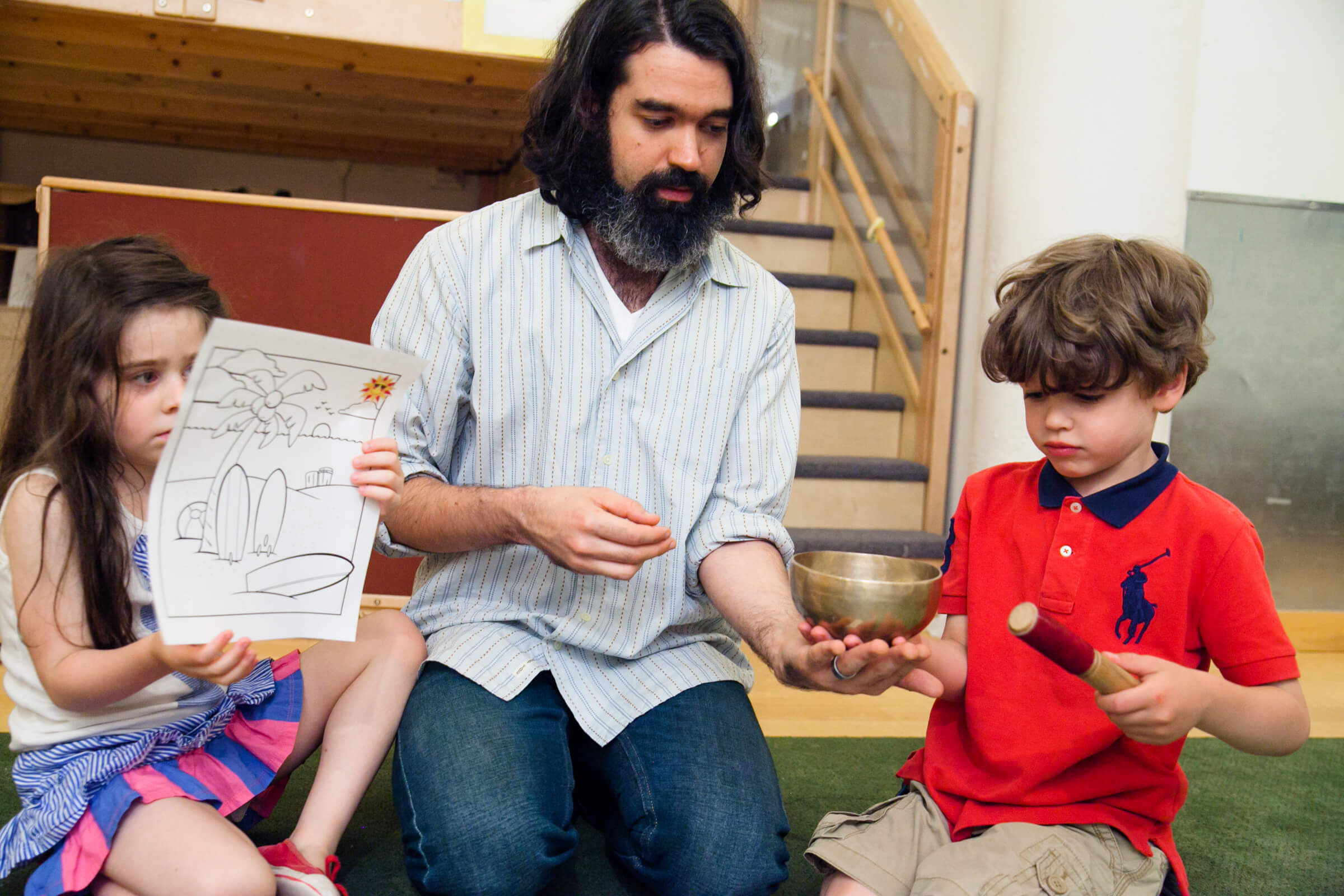Tips for trauma-informed teaching in early education
Many of us have or will experience trauma at some point in our lives. In our current political, social and environmental climate, we are all more likely to be personally impacted or know someone that is currently dealing with the effects of trauma.
As educators, we must assume that both the children in our care and our colleagues may be suffering the impact of trauma.
Studies have shown that up to two-thirds of children in the U.S. have experienced at least one type of serious trauma.
According to the American Psychological Association (APA), in community samples, more than two-thirds of children report experiencing a traumatic event by age 16.
The National Survey of Children’s Health states that 35 million children in the United States have experienced one or more types of childhood trauma.
Trauma is possibly the largest health issue facing our children today (CDC, 2019)
Once we acknowledge the prevalence of trauma in our communities and schools, we can take steps to increase our own skillfulness in providing trauma-informed curriculum and classroom strategies.
What are the Types Of Trauma?
In our educator trainings we explore trauma, its effects, and how to implement trauma-informed teaching in early education. First, let’s explore the type of trauma.
When a child is involved in or witnesses an event that feels intensely threatening, we call that trauma. There is a wide range of traumatic events or trauma types children can be exposed to. These can be placed into three main categories based on severity and frequency.
1. Acute Trauma
Acute (or Type I) trauma results from a single distressing or dangerous event. Some examples of acute trauma are a car accident, a natural disaster, a single event of abuse or assault, a sudden loss or witnessing violence.
An acute trauma event threatens emotional or physical security and creates a lasting impression.
2. Chronic Trauma
Chronic trauma (or Type II) results from repeated and prolonged exposure to highly stressful events. Some examples of situations that could cause chronic trauma include long-term serious illness, sexual abuse, domestic violence, or bullying.
In addition, multiple events of acute trauma, or even untreated acute trauma, can develop into chronic trauma.
3. Complex Trauma
Complex trauma (Type III) results from exposure to multiple, varied, and prolonged distressing events over an extended period of time. This type of trauma often takes place within interpersonal relationships and is commonly seen in victims of childhood abuse, neglect, or domestic violence.
In all three types, the impact of child traumatic stress can last well beyond childhood. However, children can and do recover from traumatic events and having trauma-informed support is imperative to that recovery.
Trauma and Our Nervous System
When experiencing a traumatic event, the sympathetic nervous system is activated, resulting in a fight/flight/freeze response. After the event is over, the person may continue to relive the event, remaining in a state of hyper arousal. It is common to experience chronic stress and perhaps develop PTSD.
Symptoms of trauma in young children can include excessive anger, tantrums, aggression, difficulty focusing or learning, acting out, stomach aches and headaches, heightened startle response, separation anxiety, and many more.
As educators, we must learn to recognize the signs of childhood trauma and also employ classroom strategies to help all of our students learn and thrive. We teach a lot of these strategies in our children’s yoga teacher training but will provide a few actionable tips in this article so you can get started right away.
Tips for Trauma-Informed Teaching
1. Mindfulness and Mindful Communication
Studies have shown that traumatic experiences alter the brain, impacting children socially, emotionally and behaviorally. Under the stress of trauma, children might appear angry, depressed, resistant, or distracted.
A child’s reactions to seemingly non-threatening events can be rapid, varying, illogical and disproportionate to the situation at hand. As educators, we have to assume several of our children are suffering the effects of trauma and learn to expect the unexpected so we can stay regulated and present in those moments.
Our mindfulness practice teaches us to observe without judgement and to create space for ourselves between stimulus and response. When we acknowledge that a child’s behavior is merely communicating an unmet need, it becomes easier to respond with compassion and view the behavior as information rather than an attack.
That creates space for collaboration and support, rather than a struggle for power. What would happen if we assumed the best of one another? What would it mean if we assume children are doing the best they can?
When we can assume children are doing the best they can with the supports they currently have, we create the basis for open communication and trust. Both are imperative to fostering an environment where learning can happen.
Try This: Breathing Ball Mindful Awareness
Sit in a circle and take a few cycles of breath together using the breathing ball.
Encourage children to notice how their body feels, how their breathing feels, and what emotions are present without judgement.
Pass the breathing ball around and have each lead a round of breathing. Ask them to say one word or phrase about how they are feeling. Option to ask where they feel those emotions in their body.
Allow those feelings to be expressed without judgement - there are no good or bad feelings.
As you continue breathing together, invite children to notice if any of their feelings shift and change.
2. Create Safe Space
When we practice mindfulness in our relationships, we create thoughtful interaction and psychological safety. While we practice expecting the unexpected, we can also create safety by making sure children always know what to expect.
Here are some tips for making ourselves and the classroom environment predictable and consistent.
Collaboratively set ground rules/intentions for behavior as well as logical consequences.
Establish and follow routines, keeping a similar overall structure while changing the activities within that structure.
Give plenty of notice before transitioning to a new activity and keep children informed along the way.
Avoid startling by stating in advance when you are going to change the environment. Some examples are playing music, ringing a bell or turning on or off the lights.
Learn more about tips for creating safety and setting your classroom up for success.
3. Promote Empowerment and Collaboration
Trauma involves taking away choice in some way. Children who experience traumatic events often feel trapped, helpless or powerless.
Practice these three things to create student empowerment and collaboration:
Empower children with the freedom to choose. Offering choices and making active participation voluntary allows children to observe activities for a time before joining in. Give options for various degrees of participation to ensure every child feels supported and safe.
Recognize areas of strength and competence. We help children feel a valuable and worthy part of the classroom community by validating and celebrating their efforts. When we use judgement-free, fact-based observations, we can help build self-esteem and reduce anxious rumination and negative self-talk.
Create opportunities for community work and support. Sometimes the best way to tune into our own feelings is to experience tuning into the feelings of others. Practicing listening, taking turns, partner yoga poses, and group collaborations are valuable for increasing social emotional learning and providing the healing power of community.
Try This: Group Tree Pose
Begin by practicing tree pose along with the video below.
Once children find balance in solo tree, invite them to try working together to make a forest of trees!
Stand in a circle, bending elbows to bring hands to the sides of your shoulders with palms facing out.
Press gently into the palms of your neighbors as you lift one leg into tree pose.
Invite children to notice if it easier to balance with the support of the group.
Once they feel steady, try slowly extending arms upward, hands still pressing to create a forest of tall, strong trees!
Take a few breaths and then come slowly out of the pose and switch sides.
4. Promote Sense of Belonging
Cultivating a sense of belonging creates security, safety, and overall well-being which then opens up space for creativity, risk-taking, learning and play.
Affirm cultural identity and celebrate uniqueness. When children feel seen, heard, and appreciated by their teachers and peers, they sense that they belong and also feel a responsibility to create that belonging for their classmates.
Limit exclusionary practices. When a child misbehaves, they are often singled out, removed from the group and not allowed to return. This punitive style of discipline can actually exacerbate the feelings of abandonment, neglect, and unworthiness that created the outburst in the first place.
Employing restorative models separates the behavior from the child and allows us to address the behavior while affirming the child. It also opens the door to group collaboration, problem solving and repair. Ultimately, if a child does need to be removed from an activity for safety or other reasons, there must always be a clear and communicated strategy for re-entry and a keenly felt desire to support their return.
Invest in group learning. Belonging is a basic human need and we are built to be in relationship. However, the ability to share ideas and affirm one another even when we disagree is lacking in our society today. Belonging means we feel safe to be who we truly are within a group, rather than contorting ourselves into something we are not in order to fit in. Early education is a perfect opportunity to teach children this skill through group work, collaboration and open dialogue.
“True belonging doesn’t require you to change who you are; it requires you to be who you are.”
5. Rest and Relaxation
In general, our children are overstimulated, over-scheduled and over-tired. Children who have experienced or are experiencing trauma are even more susceptible to overwhelm and may not be getting quality sleep at night. Providing opportunities throughout the day for rest will soothe the nervous system and teach children useful self-calming skills.
Create a mindfulness corner for reflection and relaxation. Make it comfy and inviting with pillows or bean bags for lounging. Add some quiet solo mindfulness activities like a glitter jar, breathing ball and yoga cards. Invite self-expression and reflection by encouraging children to journal or draw their experiences.
Dedicate time for stillness and reflection. There are so many competing priorities and children are often bustled from one activity to the next, as we attempt to fit too much into every minute of the day. It might seem counter-intuitive, but making time for stillness will actually create efficiency by reducing the amount of time spent on redirection and behavior.
Practice strategies for self-regulation when students are relaxed. I cannot count the number of times I have heard grown-ups tell (or yell at) children to “Calm Down!” when they are upset without providing any strategies or tools to do so. This is clearly counter-productive, exacerbates the fight/flight/freeze response and leaves the child feeling even more powerless and dysregulated as they navigate the storm of emotion on their own.
Practice calming strategies when children are relaxed to make those tools more accessible in times of challenge and allow children to feel both supported and empowered in their ability to self-regulate.
Educators and Compassion Fatigue
As we put these strategies for trauma-informed teaching into practice, it is also very important we make time for self-care and watch out for signs of compassion fatigue. Sometimes called secondary stress reaction, secondhand shock, secondary traumatic stress, or vicarious trauma, compassion fatigue is often linked to healing or helping professions.
According to the National Education Association, “over 40% of teachers leave the profession within five years” due to toxic levels of stress and teacher burnout. There is a physical, emotional, and psychological impact of helping others navigate the effects of trauma that can become overwhelming and even debilitating.
Some symptoms include:
mood swings
changes in appetite
headaches
detachment
insomnia and exhaustion
stress and anxiety
Many of the same strategies shared above for students can help educators widen our window of tolerance and reduce effects of secondary trauma. It is also important to seek professional help if and when we are feeling overwhelmed.
Save this article for later and don’t forget to download the Yo Re Mi app for children’s mindfulness and musical yoga videos.



















